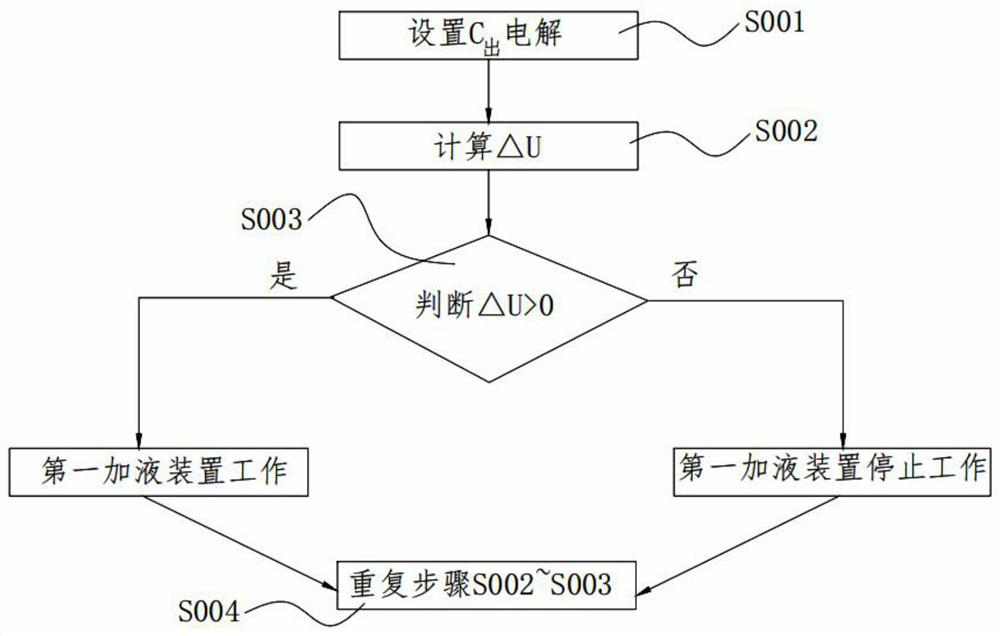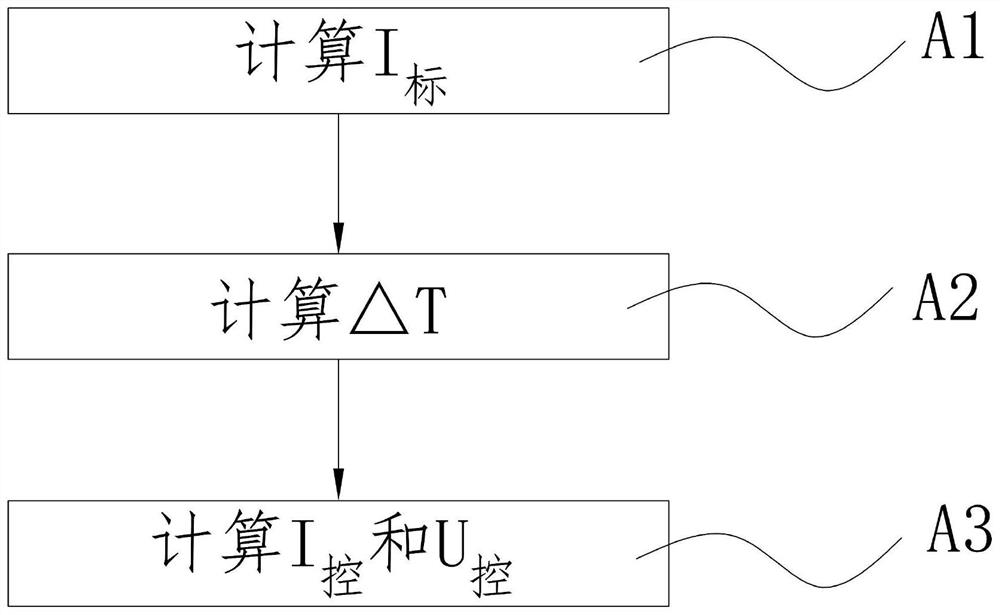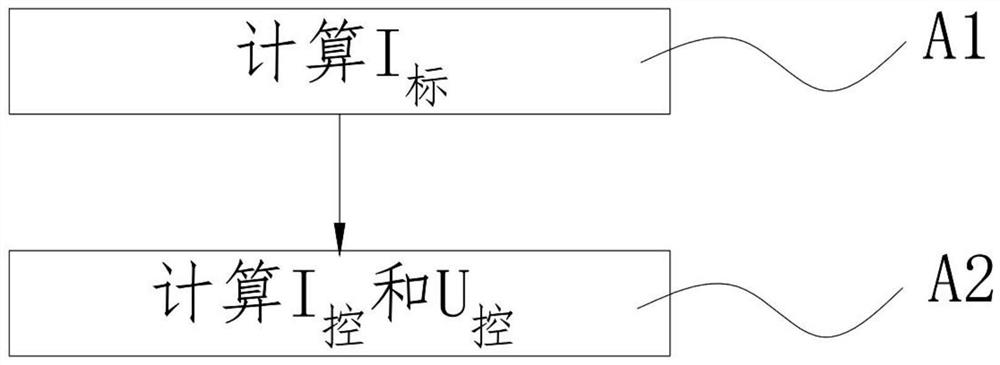Method and device for preparing subacid electrolyzed water with controllable and stable concentration
A slightly acidic electrolyzed water and concentration technology, which is applied in chemical instruments and methods, water/sewage treatment, water treatment parameter control, etc., can solve problems such as unstable effective power and uncontrollable production concentration, and achieve simple structure and fast The effect of improving electrolysis speed and concentration
- Summary
- Abstract
- Description
- Claims
- Application Information
AI Technical Summary
Problems solved by technology
Method used
Image
Examples
Embodiment 1
[0053] refer to Figure 5 and Image 6 , the present embodiment provides a device for preparing slightly acidic electrolyzed water with a controllable and stable concentration, including an electrolytic stock solution storage 1, an electrolytic cell 2, and a first mixer 3 connected in sequence, between the electrolytic stock solution storage 1 and the electrolytic cell 2 A first liquid addition device 4 is connected in series, and the first liquid addition device 4 may be a peristaltic metering pump. The electrolytic cell 2 is respectively connected with a current and voltage control unit 5 and a current and voltage detection unit 6 , the current and voltage control unit 5 is connected with the electrolytic cell 2 through a wire, and the current and voltage detection unit 6 is connected with the electrolytic cell 2 through a detection probe. The current and voltage control unit 5 is used to control the current and voltage at both ends of the electrolytic tank 2, and the curre...
Embodiment 2
[0069] refer to figure 1 and figure 2 , the difference between a method for preparing slightly acidic electrolyzed water with a controllable and stable concentration provided in this embodiment and the first embodiment is that in step S001, according to U 控 =f(C 出 ,T 测 ) to determine U 控 , where U 控 with C 出 proportional relationship, U 控 with T 测 Inversely proportional relationship.
[0070] Specifically, U 控 Calculated according to the following formula:
[0071] u 控 = K 1 ·(C 出 -K 2 )·[1-K 3 ·(T 测 -T 标 )]+K 4
[0072] K 1 、K 2 、K 3 、K 4and T 标 are constants greater than 0, K 1 Preferable 0.03~0.048, K 2 Preferable 12.929~14.929, K 3 Can be 0~1, K 4 Preferable 1.8328~3.8328, T 标 Any value at 20°C, 25°C or 45°C.
[0073] Further, determine I through the following steps 控 and voltage U 控 :
[0074] Step A1, calculate I 标 ; Based on C 出 ,according to Calculate I 标 , K 5 is a constant greater than 0, K 5 Preferable 14.746~16.746;
[0075]...
Embodiment 3
[0079] refer to figure 1 and image 3 , the difference between a method for preparing slightly acidic electrolyzed water with a controllable and stable concentration provided in this embodiment and the first embodiment is that in step S001, according to U 控 =f(C 出 ) to determine U 控 , where U 控 with C 出 proportional relationship.
[0080] Specifically, U 控 Calculated according to the following formula:
[0081] u 控 = K 1 ·(C 出 -K 2 )+K 4
[0082] K 1 、K 2 and K 4 are constants greater than 0, K 1 Preferable 0.03~0.048, K 2 Preferable 12.929~14.929, K 4 1.8328~3.8328 is desirable.
[0083] Further, determine I through the following steps 控 and voltage U 控 :
[0084] Step A1, calculate I 标 ; Based on C 出 ,according to Calculate I 标 , K 5 is a constant greater than 0, K 5 Preferable 14.746~16.746;
[0085] Step A2, calculate I 控 and U 控 ; Based on I 标 , according to I 控 =I 标 OK I 控 , and then according to U 控 = K 6 ·I 控 +K 4 , calculate U ...
PUM
| Property | Measurement | Unit |
|---|---|---|
| area | aaaaa | aaaaa |
Abstract
Description
Claims
Application Information
 Login to View More
Login to View More - R&D
- Intellectual Property
- Life Sciences
- Materials
- Tech Scout
- Unparalleled Data Quality
- Higher Quality Content
- 60% Fewer Hallucinations
Browse by: Latest US Patents, China's latest patents, Technical Efficacy Thesaurus, Application Domain, Technology Topic, Popular Technical Reports.
© 2025 PatSnap. All rights reserved.Legal|Privacy policy|Modern Slavery Act Transparency Statement|Sitemap|About US| Contact US: help@patsnap.com



